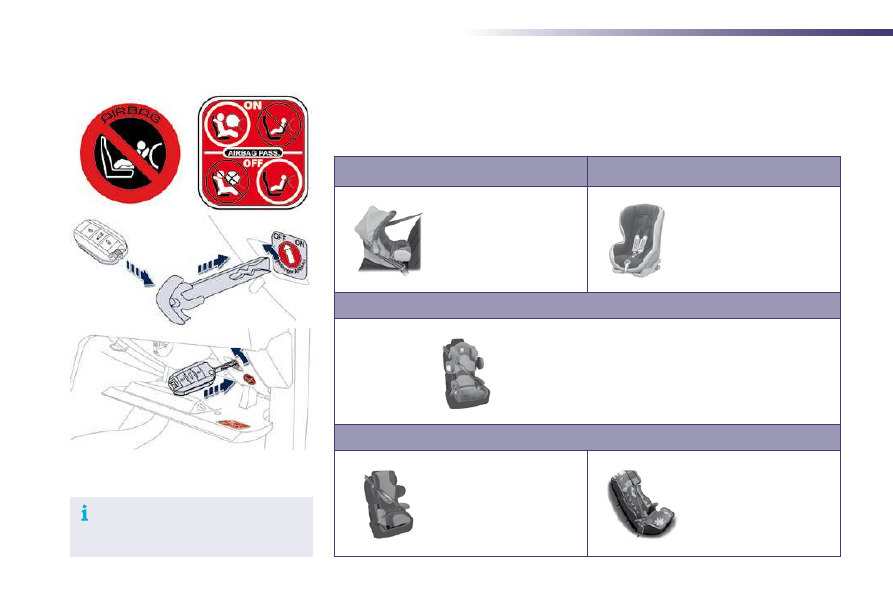Peugeot 508 Dag (2010.5). Instruction - part 11

148
i
Child safety
Passenger airbag OFF
For more information on deactivating
the airbag, refer to the "Safety" section
then "Airbags".
Child seats recommended by
PEUGEOT
PEUGEOT offers a complete range of recommended child seats which are secured using a three
point seat belt :
Group 0+: from birth to 13 kg
Group 1: from 9 to 18 kg
L1
"RÖMER/BRITAX
Baby-Safe Plus".
Installed in the
rearwards-facing position.
L2
"RÖMER Duo Plus
ISOFIX".
Groups 1, 2 and 3: from 9 to 36 kg
L3
"KIDDY Life".
The use of the restraining cushion
is compulsory for the transportation
of young children (from 9 to 18 kg).
Groups 2 and 3: from 15 to 36 kg
L4
"RECARO Start''.
L5
"KLIPPAN Optima".
From the age of 6 years
(approximately 22 kg),
the booster is used on
its own.